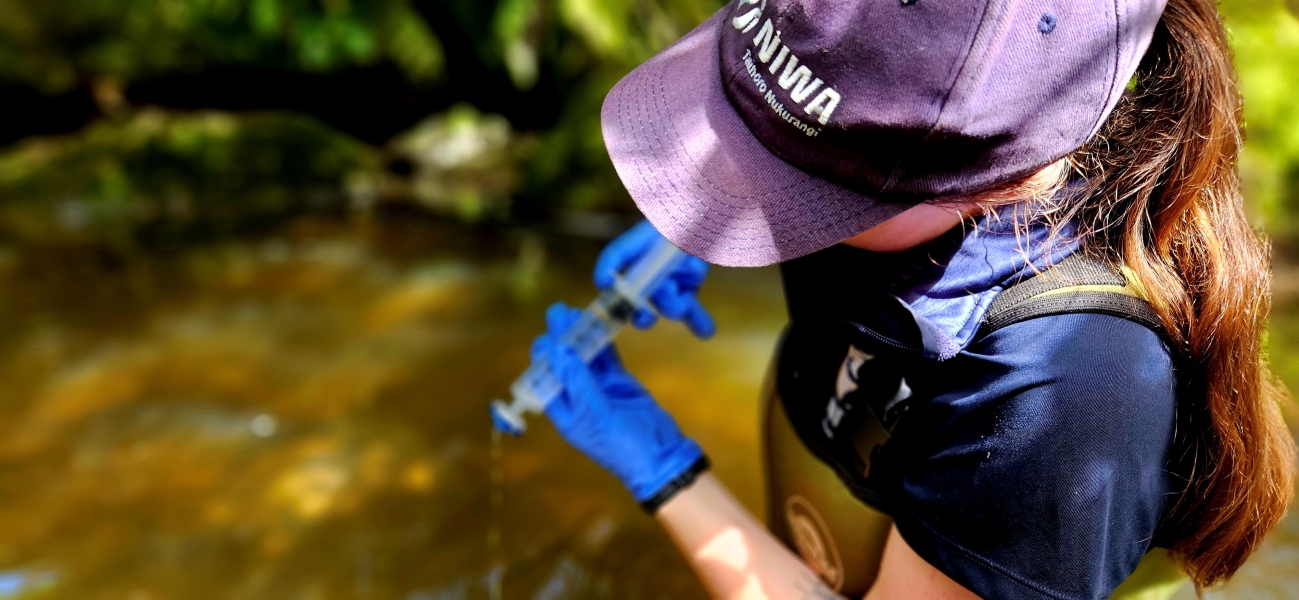The use of environmental DNA (eDNA) as a tool for biodiversity surveys is a rapidly advancing field with great potential.
NIWA has created a manual designed to provide comprehensive guidance on using eDNA to characterise aquatic populations of flowing waterways (e.g. rivers and streams), in Aotearoa-New Zealand.
"In developing these guidelines, our primary goal was to standardise protocols across New Zealand, to foster consistent and reliable data collection for better aquatic ecosystem management."
- Dr Michéle Melchior, Freshwater Fish Ecologist, NIWA
Detecting aquatic species using eDNA methods, rather than using conventional sampling methods, can reduce impacts on sensitive species and increase the power of field surveys for detecting rare, endangered and elusive species.
Moreover, eDNA offers the possibility of sampling systems that are difficult to sample using conventional techniques such as non-wadable, fast flowing rivers and offers the potential to increase monitoring efficiency and reduce costs, primarily by reducing the need for expert staff and consultancy time in the data collection.
This scalability can significantly expand our knowledge of freshwater species’ distributions, especially in regions with limited or no existing fish community records.
“eDNA is powerful new method to add to our management toolbox and one that should be used alongside conventional sampling to enhance our survey methods and results, “ said NIWA Principal Scientist of Freshwater Fish, Dr Cindy Baker.
“Validation of eDNA results is still ongoing and this data will be important in the development of eDNA based ecosystem health metrics,” Baker said.
The eDNA guidelines for lotic systems such as streams, rivers and other waterways, have been developed with guidance from the Environmental DNA Working Group, a consortium of freshwater experts from regional councils, Ministry for the Environment, Department of Conservation, NIWA, University of Waikato and Wilderlab.
The primary objective of these guidelines is to establish a standardised national approach to eDNA monitoring in lotic systems, ensuring uniformity in effort and methods for similar applications. This manual primarily focuses on protocols for sampling fish and macroinvertebrates, where comprehensive reference libraries and validated field trials exist.
As research and development in eDNA methods and applications progress, these guidelines are expected to evolve and adapt to reflect the latest advancements in the field.
Key guidance provided in this manual includes: Optimal eDNA field sampling considerations: eDNA capture methods and Results of eDNA sampling. The guidance also discusses the concept of the eDNA Prevalence Index and compares the benefits of eDNA versus conventional electric fishing, as well as using eDNA to examine the effectiveness of fish passage barrier remediation. Furthermore, the guidance also discusses and summarises the challenges related to eDNA including eDNA as a potential source of false positives, the issue of presence versus viable populations, and confounding sources of eDNA.
Overall, eDNA monitoring is a new and rapidly developing field that is likely to become a mainstay of ecosystem health monitoring into the future. As such it is expected that sampling methods and analyses will continually evolve through time, and it is envisaged that this manual will be reviewed and updated as required to reflect advancements in the technology and its application.
Download Guideline
eDNA Guidelines and field protocols for lotic systems [PDF 5.25 MB]
For more information please contact: Dr Cindy Baker [email protected] or Dr Michele Melchior [email protected]





